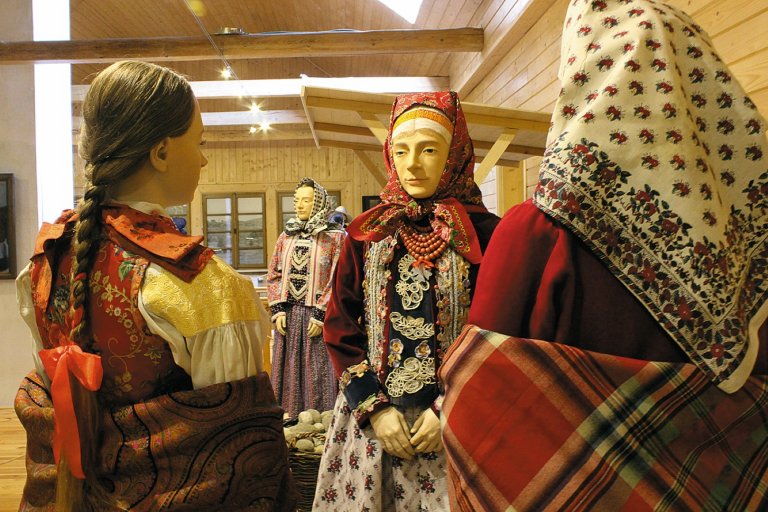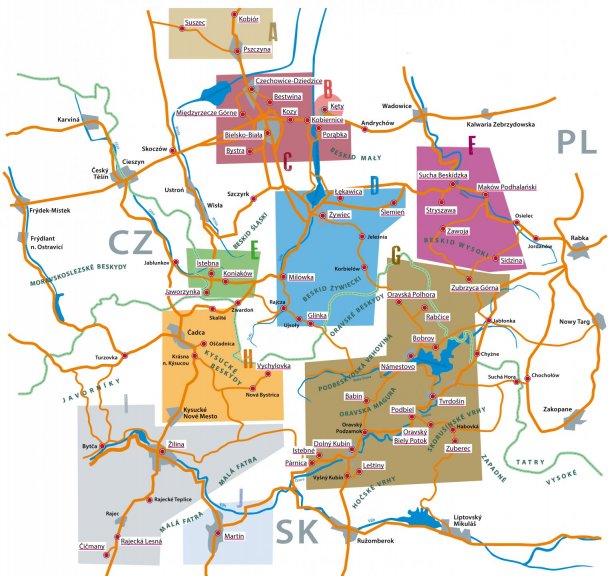Bielsko-Biała – The Historical Museum

The Historical Museum in Bielsko-Biała owns four buildings. In the Sułkowski Dukes’ Castle, there are exhibits referring to the history of the town and its surrounding as well as the history of Sułkowski Dukes (history and archaeology exhibition, the art from the 15th to the 21st centuries, weapons and hunting and numerous temporary exhibitions are held here). One of the rooms is dedicated to the ethnographic issues portraying the multicultural picture of the inhabitants of the villages within the administrative limits of the town. The Old Factory presents the industrial character of Bielsko-Biała. In Fałatówka in Bystra we can see an exhibition on Julian Fałat’s life and work. And finally, in the Weaver’s House, there is theme-focused exhibition connected with the functions of this building.
The museum has ethnographic collections. There are over 4000 exhibits here. Apart from the extensive collection of the costumes we can find folk works of art such as ancient paintings, sculptures, and chromolithographs as well as modern folk works: sculptures, reliefs, paintings and glass paintings. The biggest collections include the group of sculptures of Jan Ficoń, Karol Englert, Ludwik Kubaszczyk, Jan Stanclik and Czesław Olma and the paintings of Jan Nikiel and Maria Lenczewska. There are toys and wooden birds here as well. The traditional and ritual art is represented by nativity scenes, ritual masks, and carol singers’ stars. The Department also boasts household equipment and objects, exhibits related to the folk handicraft.
The Weaver’s House, whose traditions date back to the 18th century, presents the exhibition on the handicraft production of broadcloth, a fabric the production of which, was a specialty of two towns by the Biała river and in Bielsko and it had a centuries-old tradition of its production. The arrangement of the interiors shows the home and weaving workshop owned by a guild master. On the first floor, there is an exhibition called – ”From broadcloth to silk – folk costumes from the collection of the Historical Museum of Bielsko-Biała”. The exhibition boasts examples of all types of folk garments gathered since the second half of the 1950s in the ethnographic collections. They used to be worn in the interwar period in the areas located close to Bielsko and Biała. We can see – clothes of the Lachy, worn by women living near Biała, Pisarzowice, Bestwina and Kozy, clothes worn in Wilamowice – costume worn by maidens, formal winter attire chosen by married women, more modest clothes worn by women in Wilamowice during Lent and Advent and extremely colourful daily garments. The most beautiful costume is worn by a godmother presented in the company of a godfather. There are also clothes worn in the Pszczyna Region (Łąka, Piasek) in the Cieszyn region (Jaworze and the Cieszyn County), clothes worn by the highlanders from the Silesian Beskids region and one of the most impressive outfits – the costume of a townswoman living in Żywiec. Therefore, that part of the exhibition was also complemented by a presentation showing different stages of linen and sheep wool processing. The whole exhibition is complemented by furniture used to store clothes – ranging from painted chests, trunks, chests of drawers to wardrobes, as well as ladies’ lingerie, various outfit elements, beads and silver jewelry worn mainly with a female Cieszyn costume.
The exhibition is enriched with a multimedia presentation including scenes from the film – “Polish dances – in the footsteps of Oskar Kolberg”. Six short episodes talk about exhibited clothes and lace making in Koniaków.
Muzeum Historyczne w Bielsku-Białej
Zamek książąt Sułkowskich
43-300 Bielsko-Biała, ul. Wzgórze 16
tel. (+48) 33 811 10 35
e-mail: sekretariat@muzeum.bielsko.pl
Dom Tkacza
43-300 Bielsko-Biała, ul. Jana III Sobieskiego 51
tel. (+48) 33 811 74 06
e-mail: ewa.kosmalska@muzeum.bielsko.pl
www.muzeum.bielsko.pl


